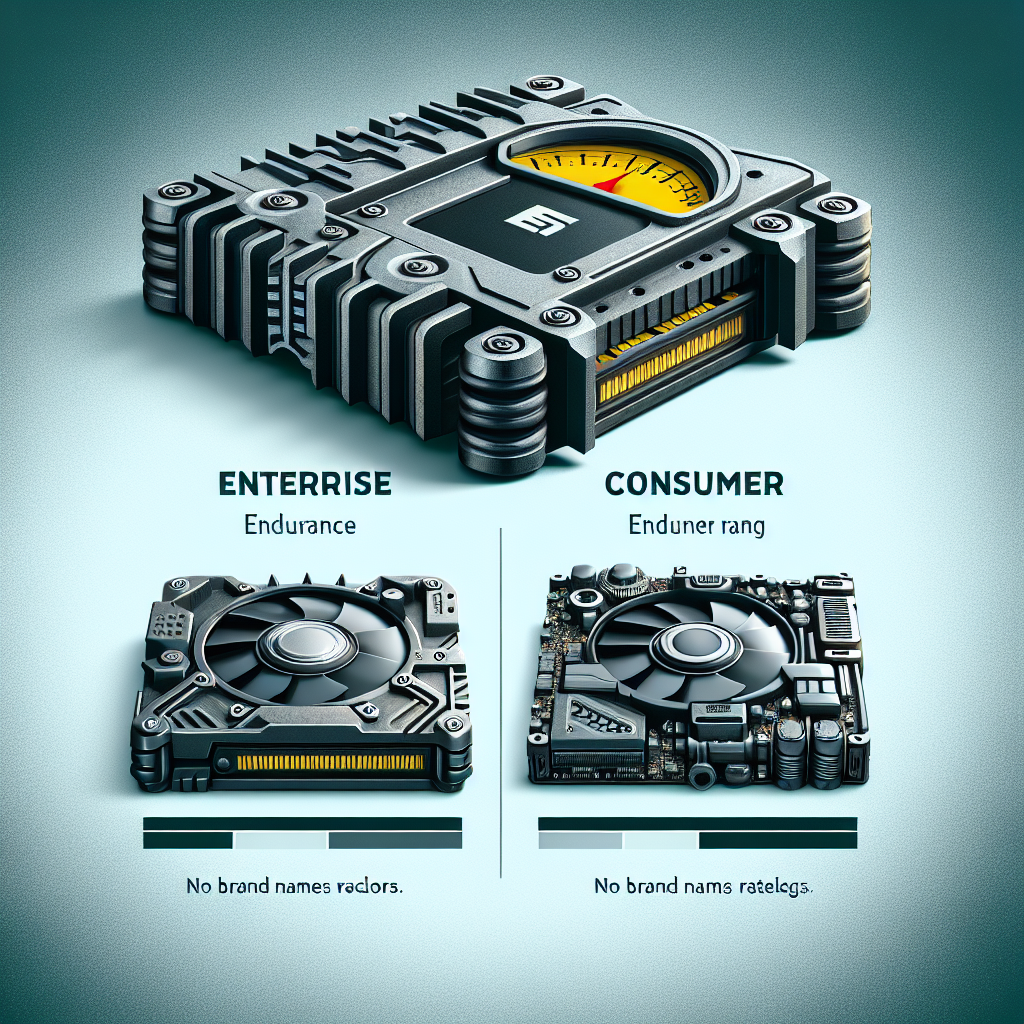Solid State Drives (SSDs) have become increasingly popular in both consumer and enterprise environments due to their superior performance and reliability compared to traditional Hard Disk Drives (HDDs). However, not all SSDs are created equal, especially when it comes to endurance ratings. Endurance, in the context of SSDs, refers to how long the drive can write, erase, and rewrite data before it begins to fail. This article will explore the key differences between enterprise SSDs and consumer SSDs regarding endurance ratings, and why these differences matter.
Understanding SSD Endurance Ratings
SSD endurance is typically measured in three metrics: Terabytes Written (TBW), Drive Writes Per Day (DWPD), and Mean Time Between Failures (MTBF).
- Terabytes Written (TBW): Indicates the total amount of data that can be written to the SSD over its lifespan.
- Drive Writes Per Day (DWPD): Represents the number of times the entire drive’s capacity can be written per day over its warranty period.
- Mean Time Between Failures (MTBF): Measures the expected operational lifetime of the SSD in hours.
Comparison Table
The table below highlights the typical endurance ratings for enterprise and consumer SSDs:
| Type of SSD | TBW | DWPD | MTBF |
|---|---|---|---|
| Enterprise SSD | 10,000 – 25,000 TB | 5-10 DWPD | 2,000,000 hours |
| Consumer SSD | 100 – 600 TB | 0.3-1 DWPD | 1,500,000 hours |
Key Differences in Endurance
1. Material and Build Quality
Enterprise SSDs are built to handle much more intensive workloads compared to consumer SSDs. They use higher-quality NAND flash memory, often in the form of SLC (Single-Level Cell) or MLC (Multi-Level Cell) configurations, which offer higher endurance levels. In contrast, consumer SSDs commonly use TLC (Triple-Level Cell) or QLC (Quad-Level Cell), which can store more data per cell but have lower endurance.
2. Usage Scenarios
Enterprise SSDs are designed for data centers, cloud storage, and high-performance computing environments, where they need to handle continuous read/write operations 24/7. Consumer SSDs, on the other hand, are used in personal computers, laptops, and gaming consoles where the workload is relatively lighter. This difference in usage scenarios directly impacts their endurance ratings.
3. Error Correction and Data Protection
Enterprise SSDs come equipped with advanced error correction algorithms and data protection features to ensure data integrity and longevity. They often include technologies like Power Loss Protection (PLP) and End-to-End Data Protection. Consumer SSDs have basic error correction features, but they are not as robust as those found in enterprise-grade drives.
4. Cost
Due to their higher endurance, build quality, and additional features, enterprise SSDs are significantly more expensive than consumer SSDs. This cost difference makes consumer SSDs more appealing for everyday users who do not require the high endurance levels of enterprise-grade drives.
Why Endurance Matters
Endurance is crucial for determining the reliability and lifespan of an SSD. In enterprise settings, where data loss can have catastrophic consequences, high endurance SSDs are essential for ensuring data integrity. For consumers, while endurance is still important, the lower demands on the SSD make consumer-grade endurance levels sufficient for everyday use.
Factors Influencing SSD Endurance
- Write Amplification: A lower write amplification factor (WAF) can extend the lifespan of an SSD by reducing the amount of data written to the NAND.
- Over-Provisioning: Extra storage capacity reserved to improve performance and endurance.
- Wear-Leveling: Algorithms that ensure data is evenly distributed across the NAND cells to prevent premature wear-out.
Conclusion
Understanding the differences in endurance between enterprise and consumer SSDs is critical for making informed decisions based on your specific needs. Enterprise SSDs offer higher endurance and reliability suitable for heavy workloads, data centers, and mission-critical applications. Consumer SSDs, while having lower endurance ratings, provide ample performance and lifespan for everyday tasks at a more affordable price point. By considering factors like TBW, DWPD, and MTBF, you can select the right SSD that aligns with your requirements and budget.

